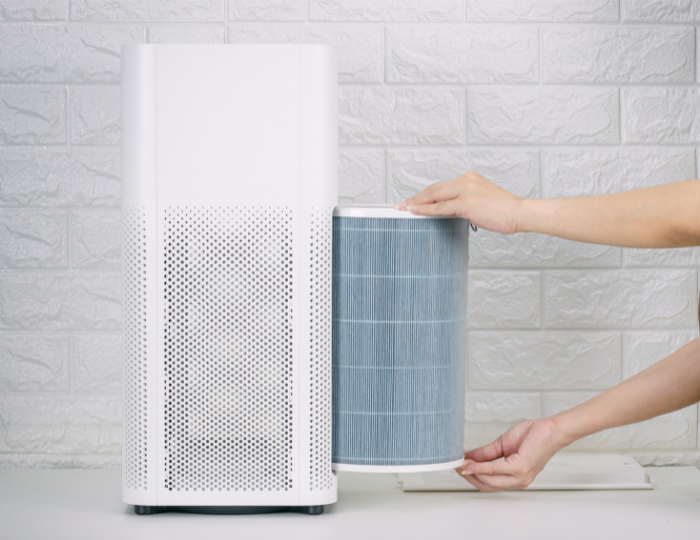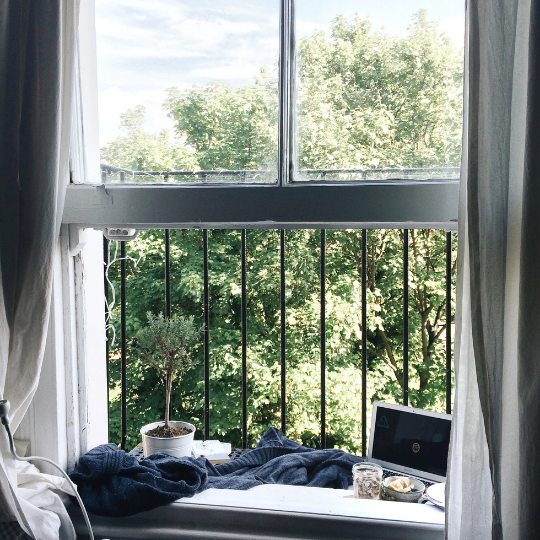 The unfortunate truth is that it may be near impossible to remove every chemical from your home. This is due to volatile organic compounds (VOCs). These are the emitted gasses from certain household items such as paints, paint strippers, wood preservatives, aerosol sprays, cleansers, disinfectants, and air fresheners.
The unfortunate truth is that it may be near impossible to remove every chemical from your home. This is due to volatile organic compounds (VOCs). These are the emitted gasses from certain household items such as paints, paint strippers, wood preservatives, aerosol sprays, cleansers, disinfectants, and air fresheners.
These can also emit from new furniture, appliances, clothes, or other items.
Research has found that indoor levels of common VOCs are 2-5 times higher than outside levels. Short-term exposure can lead to symptoms like irritation to the eyes, nose, or throat, along with nausea and headaches. Long-term exposure may cause damage to certain organs and eventually serious disease. [1]
But don’t panic yet! There are ways to limit exposure in your home and to help keep yourself guarded against harmful VOCs.
In today’s blog, we cover 10 ways to help keep these toxins out of you and your home.
1. Have houseplants
Houseplants can help reduce the amount of VOCs in the air. NASA research from 1989 found that they can eliminate certain harmful compounds in the air, using them to synthesize and grow more plant tissue. [2]
Additionally, plants can help brighten up a room and help lower stress levels. [3]
2. Ditch the dryer sheets
Dryer sheets often contain harmful compounds that can then be leached into your clothing, then breathed in by you throughout the day. Opting to not use dryer sheets can be an easy way to lower your exposure to VOCs.
One study which looked at the vents of laundry dryers which used dryer sheets found 29 different types of VOCs, some of which are well-known to be cancer-causing. [4]
Instead, opt for wool dryer balls. Not only are they natural and free of these harmful compounds, they can be used up to 1,000 times, eliminating waste.
3. Check your cleaning products
Do you know what’s in your cleaning products? All too often, they contain harmful ingredients that may irritate your skin, eyes, and lungs. On top of that, they can stick to surfaces and slowly emit into the air.
For a more gentle way to clean, consider making your own cleaner with ingredients like vinegar, baking soda, soap, water, and lemon.
4. Change your shower curtain
Most shower curtains are made from polyvinyl chloride (PVC), a type of plastic that can emit several substances that can be harmful to your health. This is especially true when exposed to the heat of your shower.
There are plenty of shower curtains now on the market that are PVC-free and instead made with more natural, non-toxic ingredients.
5. Air purifiers 
Consider getting yourself an air purifier which uses an activated carbon filter so that it can trap not just VOCs, but pathogens as well.
Research has found that air purifiers with an activated carbon filter are effective at removing VOCs from indoor spaces. [5]
To keep your home even cleaner, vacuum all surfaces frequently with a vacuum which uses a high-quality filter.
6. Avoid plastics
To reduce your exposure to harmful chemicals, it’s best to avoid the use of plastics. This is especially true for things like tupperware, or other plastics that may be heated.
In particular, avoid plastic numbers 1, 3, 6 and 7. By staying away from those, you’ll greatly reduce your exposure to BPA, phthalates, and styrene.
7. Check your bedding
Replacing your mattress is easier said than done. But when you do, be sure to find one that doesn’t use harmful ingredients in their manufacturing process.
This is true for any other bedding you may have as well, such as pillows or duvets. Also, be sure to clean your bedding in a natural, gentle detergent.
We spend one-third of our lives in bed. Don’t spend it breathing in harmful chemicals.
8. Kick off your shoes
Research has shown that wearing your shoes inside the house can bring in not just allergens and pathogens, but also pesticides. [6]
Instead, keep a pair of shoes for outside and a pair of shoes (or slippers) for inside. Or opt to just wear socks/bare feet!
9. Open your windows
Routinely opening your windows can allow your living area to be freshened up naturally with cleaner outdoor air. This circulation can push out the VOCs that may be building up in your home.
10. Protect yourself
No matter how much you do, there will still be some harmful chemicals that get into your system. The unfortunate truth is that there are just too many environmental toxins out there to fully stop exposure from happening.
This is why it’s important to make sure your body has what it needs to fight these compounds and the damage they can cause.
The bottom line
If you want to keep yourself free from harmful compounds, it comes down to being as mindful as you can about what you bring into your home.
Due to how prevalent toxic chemicals are in our modern world, these things can often slip by us.
All we can do is help keep ourselves protected and educate ourselves on the ingredients in the products we regularly use and come into contact with.
References and resources
- https://www.epa.gov/indoor-air-quality-iaq/volatile-organic-compounds-impact-indoor-air-quality
- https://ntrs.nasa.gov/citations/19930073077
- https://www.ncbi.nlm.nih.gov/pmc/articles/PMC4419447/
- https://www.ncbi.nlm.nih.gov/pmc/articles/PMC3226517/
- https://www.researchgate.net/publication/332110684_Removal_of_VOCs_and_Improvement_of_Indoor_Air_Quality_Using_Activated_Carbon_Air_Filter
- https://www.sciencedaily.com/releases/1999/04/990427045111.htm
